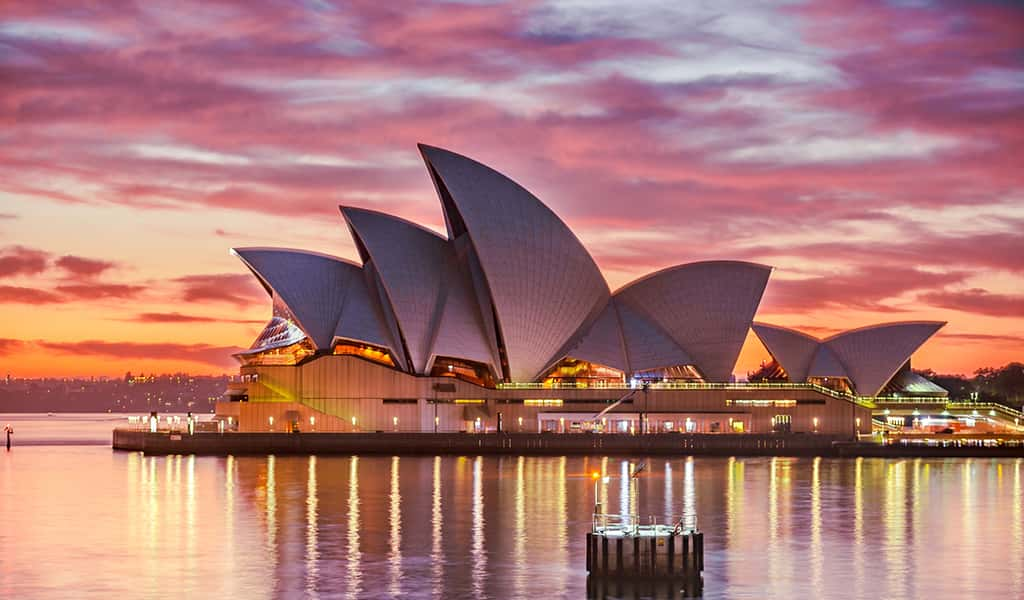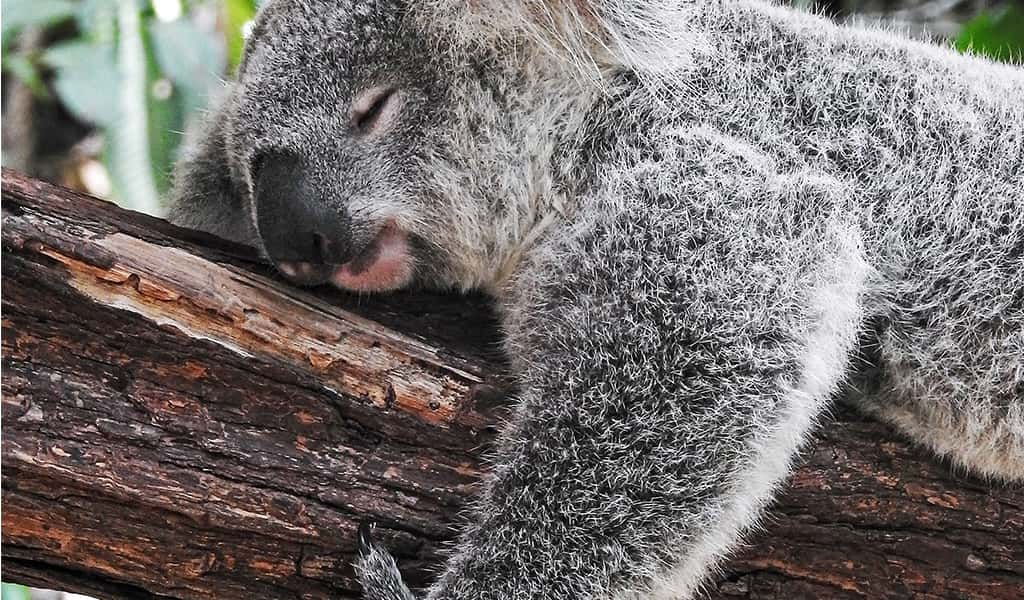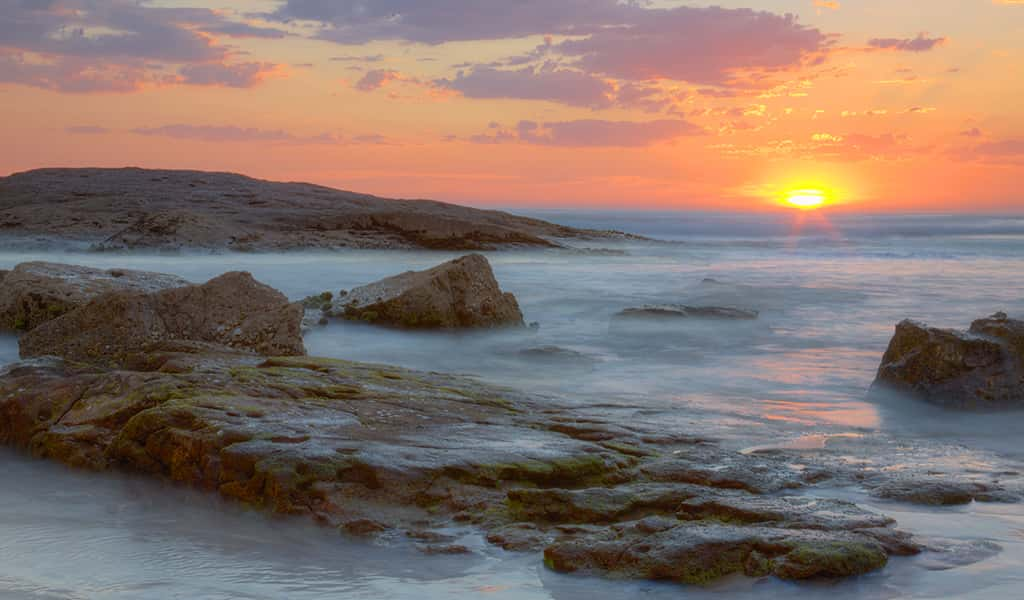Australia Travel: Caddle recommends
Travel Australia
Australia has become a mecca for everyone from the most rugged of backpackers and beach bums looking for an escape to paradise to animal lovers, exotic foodies, photographers and thrill seekers.
The world’s largest island and sixth largest country has a sparse population of 24 million spread across 7.6 million kilometres.
The country’s western culture, thriving economy and friendly, welcoming people are similar to North America’s, but the brilliant beauty of everything from the miles of white, sandy coastline on Sydney’s beaches to the bustle of large cities like Sydney and Melbourne to the vast, wild landscapes of the Outback is uniquely its own. You won’t find any other place like this in the world, which is why more than 9 million international visitors visited the country in 2017-2018 , and why tourism is one of the five super growth industries driving Australia’s future prosperity. With those numbers, travel costs have inevitably increased, but you can still find savings if you do your research and plan ahead.

Looking to save? Avoid traveling during Australia’s summer
When you travel to the southern hemisphere, you’ll find seasons are opposite to what you’re used to in the northern hemisphere. Summer is from December through February and winter runs from June through August. Travel + Leisure notes that which region you visit plays a major factor in the weather you’ll see, from high seventies temperatures in the Northern Territory during the winter to cool winters and summers in the low seventies in southern Australia (locales like Adelaide and Melbourne).
If you’re looking to save, avoid the high season from December through February, when prices jump 25% for big-city accommodation. “Shoulder season” is March through May and September through November, and you’ll enjoy warm sun, clear skies and shorter lines, says Lonely Planet.
Tip: Visit the north coast any time from April through October, the south coast and Tasmania from October through April and the Outback September through November or April through June.
Prep for a day-long flight, touch down in a major city.
Be prepared to spend an entire day flying from North America to Australia, which has four main domestic airlines, including Jetstar, Qantas, Tigerair and Virgin Australia. Airnorth (which serves Northern Territory and northwestern West Australia) and Regional Express (which serves Eastern and southeastern Australia) are regional airlines.
Flying into Australia, you’ll probably land in one of the country’s major airports:
- Sydney Airport
- Melbourne Airport
- Brisbane Airport
- Perth Airport
According to sustainable travel blog Drink Tea & Travel, you’ll want to plan at least 6 to 8 months prior to your trip to boost your chances of catching an early-bird price on one of the airlines. Try to fly into one of the main cities listed above to get the best deals.
Public Transport
Take advantage of Oz’s extensive network of public transit, including bike paths and buses. Put your feet to pedals and follow the paths that take you through most major cities, as well as thousands of kilometeres kilometers of country roads. You’re also in luck if you’re a mountain biker – there are many forest trails. Looking for a challenge? Go outback cycling.
You’ll find most buses well-equipped with amenities such as AC, toilets and video screens; they’re also smoke-free and if you’re lucky, you’ll have wi-fi. However, hopping a bus isn’t always cheaper than flying and you may be setting in for a long trip. Also keep in mind that small towns will have a single drop-off/pick-up point (post office, shop, etc.) rather than a bus terminal.
You can also pick up a variety of Greyhound passes that let you travel for a specific number of days on certain routes, including:
- Short Hop Pass (30 days on a variety of routes, ranging from $105 to $229)
- Hop On Hop Off Pass (90 days for long journeys in stages on a route)
- Kilometre Pass (1,000 km for $189 to 25,000 km for $2,675).
See more information about bus routes and ticket prices on Lonely Planet’s guide to getting around Australia.
Though there’s an enormous amount of water around Australia, aside from taking short-hop regional ferries to some of the islands, navigating by boat isn’t usually feasible.

Stay in a dorm or Airbnb, or go camping
Australia’s currency is the Australian dollar (AUD). Nomadic Matt notes the sticker shock many experience when they arrive in Australia, and that the currently strong dollar is virtually on par with the American dollar, meaning Americans get no advantage. The situation is even more dismal for Europeans, with the euro and pound yielding less value for money.
Budget Your Trip suggests you should expect to spend about AUD$188 (CAD$181) per person per day in travel costs on a mid-range budget. For a two-week trip for a couple, you’re looking at AUD$5,263 (CAD$5,053). The travel budgeting site also breaks down the price of accommodation and food, putting accommodation at AUD$80 (CAD$77) and food at AUD$41 (CAD$39) per person per day. Local transportation – taxis, local buses, subway, etc. – was priced at AUD$42 (CAD$40) and intercity transportation – travel between cities – was priced at AUD$140 (CAD$134).
You’ll notice the AUD is close to par with CAD, so there’s no need to convert prices.
Ways to Save
Looking to stay in a specific city on the cheap? UniversityRooms is a cheap alternative to a bed and breakfast or hostel and provides empty, clean and safe university rooms for travellers to bunk in at affordable rates – even if you’re not a student. Choose between bed and breakfast or self-catering rooms. For example, as of January 6, 2019, two adults can each stay in a standard single room at Medley Hall at the University of Melbourne for AUD$80 each from January 27 to February 10. Book a standard double that sleeps two people for AUD$140.
You can also try Airbnb and find a diverse range of properties from a villa in the hinterland to an apartment in Melbourne or a private room in Sydney.
Tip: If you’re hoping to backpack, you’re in luck. Rural Australia offers several gorgeous places to camp. You can also ask to pitch a tent in people’s yards and cook your own food on a portable backpacking stove. – The Broke Backpacker
David Gilbert backpacked through Queensland and Northern Territory for two months about three decades ago, slashing his budget by staying in campsites and hostels for most of the trip.
“Most travel was done by coach bus,” he says, adding, “(There are) long stretches of nothing in the Outback – small ‘towns’ of one family, a petrol station, and a pub as waypoints.”
As he was traveling through the beautiful desert landscape of Ayers Rock (Uluru), the moderate temperatures during the day dropped to below freezing at night, “so you need to have equipment rated for the cold.”
He also cautions that the rock is “quite steep. While there is a guideline, expect your calves to get a workout.”

Safety first
You’ll also want to check your luggage and accessories thoroughly for pests and be cautious around wildlife.
<blockquote"It's important to shake out your sleeping bag before going to bed, and your shoes in the morning, as insects, scorpions and snakes have been known to take up residence. Lots of animal life in Australia will try to kill you, so you have to be cautious."
Tip: Watch out for wildlife. With the largest crocodiles in the world, killer box jellyfish and hairy spiders, extremely deadly cone fish, great white sharks and even boxing kangaroos, there’s plenty to be cautious of. That said, the dangerous creatures here only kill about five people annually. Just be sure to protect yourself, warns y Travel Blog.

Hit happy hours and fire up the BBQ
Although Australia is a popular destination for foodies, a cursory search of travel blogs will tell you it’s expensive, but there are a few hacks you can use to save some of your precious travel budget.
The Smart Gear Blog suggests consulting websites such as Time Out, Broadsheet and The Urban List to find cheap eats for under $10 and daily happy hours in almost every major city in Australia. From there, make a list of all the daily specials and happy hours you plan to hit..
Global Gallivanting recommends taking advantage of the Australian passion for BBQs – most towns have free outdoor BBQ facilities. Grill some lamb burgers with red onion aioli, and kick back with a cold Australian beer.
You can also shop at the large supermarkets like Coles and Woolworths, and pick up some basic supplies for a week for $60. Compare that with eating in restaurants, where you can expect to pay between $15 to $20 for an average email, $5 for a coffee, and $8 to $10 for a beer or glass of wine in a bar.
Explore the waters, discover Melbourne
Snorkel at the Great Barrier Reef
Sure, you can see the reef on the Discovery Channel, but even the brightest of 4k screens can’t do this World Heritage site justice. Millions of eager snorkelers and divers flock to this reef system off the east coast of Queensland annually, and for good reason – as one of the most biologically diverse places on the planet it’s environmentally protected and is home to thousands of species of marine life, from tiny corals and shrimp to sharks and dolphins.

Go behind the scenes at the Sydney Opera House
The iconic Sydney Opera House beckons from the edge of Sydney Harbour. One of the most recognizable buildings of the 20th century, its filled with works of art by visionaries, architects, engineers, artists and more. Backstage tours run daily at 7 a.m., so you’ll have to be up and at ’em for the privilege of getting a behind-the-scenes look at this attraction.
Watch whales in Hervey Bay
If you’ve never been whale watching, you’ll be delighted by the humpbacks’ performance in Hervey Bay just north of Brisbane. This is where the young learn the ropes, so you’re likely to see full aerial displays. As Queensland Blog describes, “Hervey Bay is where you come for Cirque du Soleil of whale behaviour.” Best time to visit is July to November.
Explore Melbourne
Whether you’re looking to enjoy a summer’s evening at the Queen Victoria Night Market, check out some local cafes and street buskers, stop and smell the roses at the botanical gardens or take it easy on the beach, Melbourne has it all. See Where’s Mollie’s Complete Guide to Exploring Melbourne for ideas.

Discover the Outback
Whether it’s jumping into a swimming hole, fishing in the Kimberley Region’s freshwaters, hiking rocky landscapes, watching amazing wildlife or taking in a once-in-a-lifetime stargazing experience, you’ll never forget a journey through the Outback. Driving yourself is an affordable option. You can also take a 2WD or 4WD, a train, or bus.
Of course, this is just a small sample of adventures you could take – see Nomadic Matt’s take on Things to See and Do in Australia and Australian Traveller’s The Outback on a Budget for more ideas.
Tip: Expect to be greeted warmly if you have a Canadian flag on your backpack. Australia and Canada share a kinship as commonwealth countries, and citizens from both locales are known as polite and warm – David
Learn more about traveling in Australia
- Australia – National Geographic
- Sydney’s deeper dimensions – National Geographic
- Diving at the Great Barrier Reef – The Blonde Abroad
- 101 ways to do Australia on a budget – Speedy Booker
- Australia 2018 Trip Recap – Rachael DeVaux
- Welcome to Australia – Lonely Planet
- Australia Travel Guide for 2019 – Nomadic Matt
- How to travel in Australia on a budget – y Travel Blog
- How much does it cost to travel Australia: A budget breakdown
- How to travel Australia on a budget – Culture Trip
- Australia on a budget in 10 days – Australia.com
- Outback journeys – Australia.com
- 20 places in Australia you can’t afford to miss – Travel Triangle
- 14 top-rated tourist attractions in Australia – PlanetWare
- Australia travel guide – Travels of Adam
